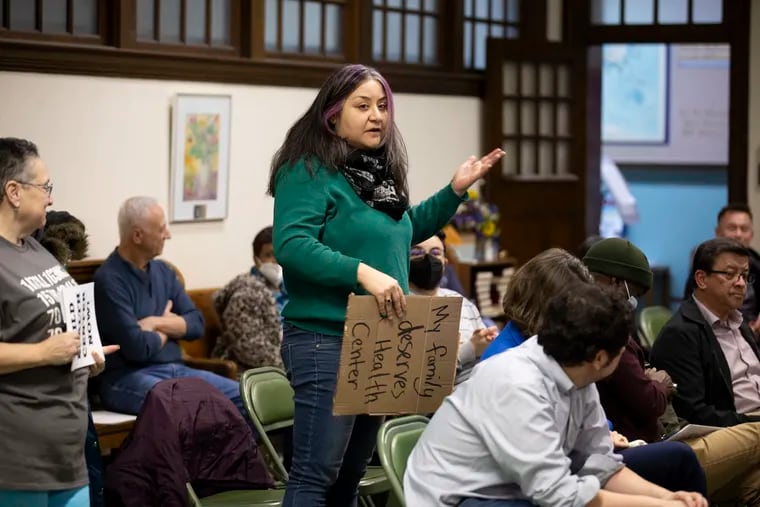If you're lower income, live in Northeast Philadelphia, and have health issues, you're often out of luck.
That's because, for years, the neighborhood had only one city-run health center for its roughly 300,000 residents. And as it has become home to an influx of lower-income residents and those from refugee and immigrant communities, many of whom lack private insurance, the situation has become more dire.
The Philadelphia Department of Public Health has been planning two new health centers in the Northeast for years. And I think that's a very good thing.
The health department found the sites after years of searching for the right locations. One will be located at the Frankford Transportation Center and the other on the grounds of Friends Hospital on Roosevelt Avenue.
The new health centers will be large enough to accommodate over 40,000 patients. Currently, the Northeast has only one health center in the city, located on Cottman Avenue, near Bustleton Avenue. There — at Health Center 10 — it takes about 10 months to get a new appointment for an adult. There are dozens of municipal and federal health centers found throughout Philadelphia, but only three in the entire Northeast (one city, two federal), despite being one of the city's most densely populated neighborhoods.
Outside of the Northeast, most of the public health clinics have enough capacity to provide treatment in a reasonable amount of time.
Over the past 40 years, Philadelphia's demographics have changed. Center City, University City and surrounding neighborhoods have seen an influx of wealthier families. The Northeast has become home to one of the highest concentrations of people immigrating to Philadelphia. In addition, poverty levels have risen significantly: Since 1990, the number of people living in poverty in Mayfair, for example, has risen by more than 400%.
ONE 2018 Review of access to primary care by the Department of Public Health found that the city's Lower Northeast, in particular, lacks providers, making it a “health care desert.”
Of course, as with any great project, there are people who oppose it.
» READ MORE: Discussion continues on new health center proposal in Northeast Philadelphia
Some residents have raised concerns about the demolition of the historic building on the Friends Hospital campus, which is nearly 170 years old. No one wants to see our city's history erased, but in this case, I feel the benefits of having a new health facility that serves tens of thousands of people a year in a neighborhood that desperately needs it outweigh the downsides of tearing it down. existing structure.
While the Friends site (the larger of the two proposed health centers) would provide ample parking, some critics have expressed concern that anyone taking public transit would have to cross busy Roosevelt Avenue. However, as part of “Route for change,” the city is committed to making the crossing at Langdon Street (near Friends Hospital) safer for pedestrians. In addition, red light cameras on the Avenue have been credited with reducing pedestrian collisions by 50%.
If patients still do not feel safe, they can choose the other location at the Frankford Transportation Center, which is easily accessible by bus.
The biggest risk, for me, would be going back to the drawing board to find a new location. Even if the current plan goes ahead, the new facility won't be open until next year. If the city has to spend more time identifying a new site, that could take years — so there may no longer be money in the budget to build it. Meanwhile, residents are suffering from the lack of health centers that the city could build right now.
The demand for new health centers in the North East has never been greater. The sooner we build the new centers, the sooner people will have access to the life-saving healthcare they need.
John Dodds is its director Philadelphia Unemployment Projectwhich works with laid-off Philadelphians, many of whom lose their insurance after being laid off and need the low-cost health care offered at city health centers.



